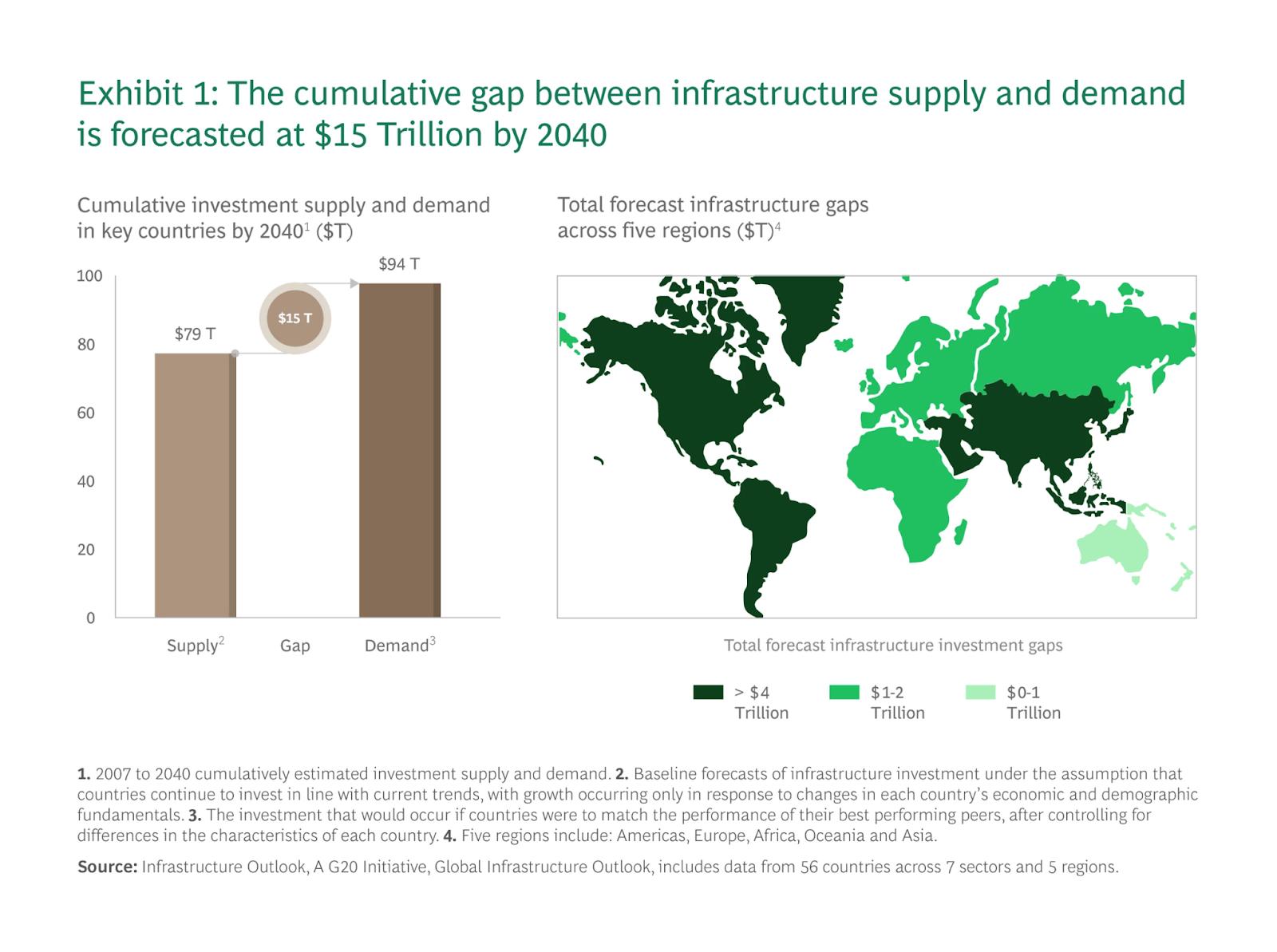Investing in Construction & Engineering Stocks


- Construction & engineering firms drive global infrastructure, benefiting from urbanization, climate resilience, and government spending.
- Key players include Jacobs, AECOM, and Fluor (diversified engineering), Quanta Services (renewable grids), Caterpillar/Deere (equipment), and Vulcan/Martin Marietta (materials).
- Trillion-dollar government programs, private-sector demand, and the adoption of digital/AI-driven construction technologies fuel growth.
- Risks include cyclicality, cost overruns, raw material inflation, labor shortages, and valuation pressures—making selective positioning crucial.
Building Blocks of the Global Economy
TradingKey - Building and construction, as well as engineering companies, rarely receive the same headlines as technology companies, but they form the backbone of most economies nowadays. From bridges and highways to airports, power stations, and skyscrapers, their work forms the basis of commerce and quality of life. Investor ownership of these stocks gives exposure to infrastructure cycles, government expenditures, and long-term trends in urbanization.
Unlike speculative growth industries, engineering and construction consistently deliver tangible value based on physical assets. They can be cyclical, tied to economic activity, but the very imperativeness of infrastructure ensures perennial demand. Against a world under threat of aged assets, climate change, and population growth, these companies stand at the heart of the transformation required.
Why the Sector Matters
Infrastructure is more than concrete and steel; it's the circulatory system of the economy. It reduces the cost of moving goods around, supplies factories with power, and withstands natural shocks. As governments confront rising infrastructure deficits, constructors and engineers become essential partners in bridging the gap.
Urbanization escalates this imperative. By 2050, two-thirds of the population is expected to be urban, necessitating substantial investments in shelter, transit, and services. Climate change, on the other hand, poses other priorities: flood mitigation, solar and wind facilities, and resilient infrastructure that can withstand extreme heatwaves and storms.
Such dynamics ensure reliable demand over the long term, making the business a core holding in long-term portfolios.

Source: https://www.bcg.com
Commodity Currencies
It's a big and multi-levelled business. There are worldwide engineering conglomerates, such as Fluor (FLR) and Jacobs Solutions (J), which provide design, project, and technical services for work ranging from energy and transit to defence. There’s AECOM (ACM), which combines engineering and consulting and specializes in sustainable infrastructure and city planning.
Specialized players form niches, as well. Quanta Services (PWR) has become the infrastructure leader for energy, developing the infrastructure for renewable power and transmission lines. Heavy equipment manufacturers such as Caterpillar (CAT) and Deere (DE) do not engage in projects themselves, but rather support the entire industry through complementary machinery for large-scale construction.
Aggregate and cement supply giants Vulcan Materials (VMC) and Martin Marietta (MLM) immediately profit from infrastructure spikes, as their businesses directly correspond with demand for raw materials in highway, bridge, and real estate construction.
Growth Drivers
The most visible growth catalyst is government spending. It is the United States' Infrastructure Investment and Jobs Act, which amounts to over $1 trillion, and will accelerate contracts for Fluor, AECOM, and Quanta Services in the years to come. Adding to European and Asian initiatives, these will modernize transportation infrastructure, renewable power, and resilient utilities.
Private-sector demand provides an additional layer. Industrial and real estate development companies now commonly bring large firms, such as Jacobs, in to bring advanced technologies to the design of sustainable structures. Quanta Services benefits from the transformation underway in the energy sector, as the utility industry constructs renewable energy sources and replaces ageing grids.
Finally, execution is being revamped through the adoption of technologies. Jacobs adopted data-driven project management and building information modeling (BIM), and Caterpillar added AI to its machines for increased productivity. Companies that blend old-school construction methods with new-school technologies will drive the next stage of growth.
-33d8627501ab40c6ba1c178decf6ff5b.jpg)
Source: https://www.fred.stlouisfed.org
Risks and Challenges
Despite the presence of structural tailwinds, the industry faces challenges. Cyclicality cannot be underestimated; during recessions, private construction falls, taking a toll on contractors and materials builders. Cost overruns and delays on mega-projects can be detrimental to firms like Fluor, which commonly participate under fixed-price arrangements.
Raw materials inflation, such as in steel, aggregates, and fuel, can shrink margins if not passed to customers, and impacts Vulcan Materials, among others. Labor shortages further complicate project delivery and profitability.
Another aspect is valuation. Although Quanta Services maintains a premium multiple due to its participation in the energy transition, others, such as Fluor, remain more cyclical and volatile names. It is up to investors to balance the health of the balance sheet and project pipelines in determining exposures.
Portfolio Positioning
Stocks of construction and engineering firms can suit portfolios in several ways. Core holdings in solid, diversified plays like Jacobs or AECOM offer defensive exposure. Special contractors, such as Quanta Services, capitalise on the structural growth associated with solar and other renewable energy sources. Cyclical gains are driven by Caterpillar and Deere, both of which benefit from industrial and agricultural development.
Companies like Vulcan and Martin Marietta add exposure to volume growth in infrastructure. Investors seeking diversified exposure can also utilise ETFs tied to U.S. infrastructure or industrials, which encompass contractors, suppliers, and equipment manufacturers.
-a3afc7211a1b4507b7687a6330f774d4.jpg)
Source: https://www.assets.globalxetfs.com
Income-driven investors will be drawn to large-cap companies that generate steady dividends, and growth-driven portfolios will selectively rely on renewable infrastructure enablers, such as Quanta. The sector's diversity allows investors to balance stability and risk.
Conclusion: Owning the Future of Infrastructure
Not sexy like Silicon Valley, but construction and building deliver permanence and immediacy. As nations grapple with ageing infrastructure, climate change, and urbanisation, the outlook for companies such as Jacobs, Fluor, and Quanta Services is expected to rise. As buyers like Vulcan and entrepreneurs like Caterpillar fill the market with products that meet changing needs, the stage is set perfectly for their success.
Risks, cyclicality, cost pressures, and execution are legitimate, but megatrends driving infrastructure spending overshadow them. Construction and engineering stocks give investors a direct connection to growth worldwide and, simultaneously, a bet on infrastructure growth; they not only construct buildings, but lay the ground for economies, and for resilient portfolios looking at the upside.
-9714fbf5851c47c68fb9ac19ff4145f8.jpg)







